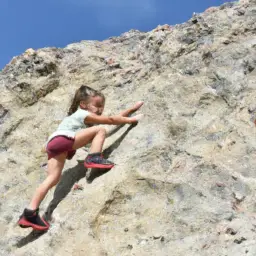Are you looking to build a stronger, more resilient team? If so, cultivating grit may be the key. Grit is a trait that involves perseverance, resilience, and a willingness to take on challenges.
In today’s fast-paced and ever-changing business environment, building grit is essential for teams to succeed. The benefits of cultivating grit in teams are numerous. From increased productivity and engagement to improved problem-solving skills and innovation, grit can help teams overcome obstacles and achieve their goals.
In this article, we’ll explore the top 10 benefits of cultivating grit in teams and provide practical tips for building grit in your own team. So, whether you’re a team leader or a team member, read on to discover how cultivating grit can help your team thrive.
Key Takeaways
- Cultivating grit in teams leads to increased productivity, engagement, problem-solving skills, and innovation.
- Developing resilience and a willingness to take on challenges is key to building grit within a team.
- Encouraging risk-taking, setting challenging goals, and emphasizing a growth mindset can help build grit in teams.
- Regularly assessing team grit levels and tracking progress over time is important in cultivating grit within a team.
What is Grit and Why is it Important in Teams?
Grit’s crucial for teams to thrive, and it’s all about perseverance and passion combined. Defining grit as the ability to stick to long-term goals despite challenges and setbacks, it’s clear why it’s important in team dynamics.
With grit, team members can work through obstacles and setbacks without giving up, allowing them to achieve their goals and succeed as a team. In addition, grit is important for building resilience in teams.
When faced with adversity, teams with grit remain focused and determined, adapting to changing circumstances and finding new solutions to problems. By cultivating grit in teams, leaders can create a culture of resilience that fosters innovation and growth, even in the face of challenges.
Overall, the importance of grit in team dynamics cannot be overstated, as it lays the foundation for success and perseverance in the face of adversity.
Increased Productivity and Engagement
When it comes to productivity and engagement in teams, cultivating grit can make all the difference. By persevering through challenges, you’ll develop a resilience that keeps you going even when the going gets tough.
This, in turn, improves your focus and work ethic, leading to increased productivity and engagement within your team.
Perseverance Through Challenges
Overcoming obstacles isn’t always easy, but teams that cultivate grit learn to persevere through challenges. Building resilience is an important aspect of cultivating grit, as it allows teams to bounce back from setbacks and keep pushing forward.
When faced with difficult tasks or unexpected roadblocks, teams with grit don’t give up easily. Instead, they take a step back, reassess the situation, and come up with a new plan of attack. This kind of perseverance is essential for success in any project or goal.
Another key component of perseverance through challenges is overcoming obstacles. Teams with grit understand that obstacles are simply part of the process, and they don’t let them derail their progress. Instead, they use obstacles as opportunities to learn and grow. By figuring out how to overcome obstacles, teams with grit become more innovative and adaptable, which makes them better equipped to handle future challenges.
When you cultivate grit in your team, you’re not just building a group of resilient individuals. You’re creating a team that can overcome any obstacle and achieve great things together.
Improved Focus and Work Ethics
You’ll enjoy the improved focus and work ethics that come with cultivating grit in your team. Developing resilience and building persistence are key components to fostering focus and work ethic within a team. By encouraging your team members to push through challenges and setbacks, you’ll equip them with the tools they need to stay focused and motivated on their goals.
The power of grit cannot be underestimated. Cultivating perseverance pays off in productivity and success. When team members have the mental toughness to persevere through difficult tasks, they are better equipped to handle whatever challenges come their way. This leads to a more productive and successful team overall. By fostering grit in your team, you’ll not only help your team members reach their personal goals, but you’ll also contribute to the success of the team as a whole.
| Benefits of Cultivating Grit in Teams |
|---|
| 1. Improved focus and work ethic |
| 2. Increased resilience and persistence |
| 3. Better problem-solving skills |
| 4. Greater creativity and innovation |
Better Communication and Collaboration
When you cultivate grit in teams, you can expect better communication and collaboration. This includes being open to feedback, which allows team members to improve and grow together.
Additionally, building team unity and trust helps everyone work towards a common goal and creates a supportive work environment.
Openness to Feedback
By embracing feedback with an open mind, you and your team can develop grit and improve your performance. The importance of constructive criticism can’t be overstated. It allows you to identify your weaknesses and areas for improvement, which is essential for growth. By creating a growth mindset, you and your team can see feedback as an opportunity to learn and improve, rather than as a personal attack.
To cultivate openness to feedback within your team, consider the following four steps:
-
Encourage a culture of feedback. Make it clear that feedback is welcome and valued, and provide opportunities for team members to give and receive feedback regularly.
-
Be specific and objective. When giving feedback, be specific about the behavior or action you are addressing, and keep it objective. Avoid personal attacks or general criticisms.
-
Listen actively. When receiving feedback, actively listen to what is being said and try to understand the other person’s perspective. Ask questions to clarify if necessary.
-
Follow up. After receiving feedback, follow up with the person who gave it to show that you’re taking their comments seriously and that you appreciate their input.
Team Unity and Trust
Creating a strong sense of unity and trust within a team is crucial for achieving success and fostering positive relationships. Without trust, members may feel hesitant to take risks or share their ideas, leading to a lack of innovation and progress. And without unity, team members may feel isolated or competitive with one another, hindering collaboration and communication.
One effective way to build unity and trust within a team is through team building activities. These activities can help members get to know one another on a deeper level, creating a sense of camaraderie and shared purpose.
Additionally, conflict resolution strategies should be established and practiced to ensure that any disagreements or misunderstandings are addressed in a constructive and respectful manner. By prioritizing unity and trust, teams can work towards achieving their goals in a supportive and positive environment.
Improved Problem-Solving Skills
Now, let’s talk about how cultivating grit can improve your problem-solving skills.
As you continue to develop your adaptability and creativity, you’ll be better equipped to handle unexpected challenges and come up with innovative solutions.
Additionally, your resilience to failure will allow you to bounce back quickly and learn from your mistakes, leading to greater success in problem-solving.
Keep pushing yourself to embrace challenges and persevere through obstacles, and you’ll see your problem-solving abilities grow stronger every day.
Adaptability and Creativity
You can tap into your team’s adaptability and creativity by cultivating grit. Grit is the ability to persevere through obstacles and challenges with passion and determination.
When your team members develop grit, they become more adaptable and creative in their problem-solving skills. Adaptive leadership involves being able to adjust to changing circumstances, and cultivating grit in your team can help them develop this trait.
With grit, your team members can also become more creative in their problem-solving. Creativity involves finding innovative solutions to challenges that may not have been considered before. When your team members have grit, they’re more likely to think outside the box and come up with new and creative ideas.
This can lead to improved productivity, efficiency, and overall success for your team. By cultivating grit in your team, you can tap into their adaptability and creativity, leading to a more successful and innovative team dynamic.
Resilience to Failure
Don’t let failure defeat you – building resilience to setbacks allows you to bounce back stronger and more determined than ever before. Resilience training is essential for any team that wants to succeed in the long-term.
Rather than seeing failure as a final destination, those with a growth mindset view it as an opportunity to learn and improve. By cultivating this resilience in teams, you can create a culture that embraces challenges and encourages individuals to take risks.
Resilience to failure doesn’t mean that you won’t feel disappointment or frustration when things don’t go as planned. It means that you have the mental toughness to pick yourself back up and keep moving forward. This trait is essential for any team that wants to achieve high levels of success.
By embracing failure and using it as a catalyst for growth, you can create a team that is unafraid to take risks and push the boundaries of what is possible. With resilience training, your team can develop the skills they need to face any challenge head-on and come out stronger on the other side.
Increased Innovation
Imagine how much more innovative your team could be if everyone cultivated grit. By developing perseverance and a growth mindset, team members become more open to taking risks and trying new things. This increased innovation leads to new ideas and solutions that can help the team succeed and thrive.
One way grit can boost creativity is by encouraging team members to think outside the box. When faced with a challenge, those who have developed grit are more likely to persist in finding a solution rather than giving up. This can lead to breakthroughs and unique approaches to problems that may have seemed insurmountable before. Additionally, grit allows team members to see failure as a learning opportunity rather than a setback. By embracing failure and using it as a chance to learn and grow, team members can become more creative and innovative in their problem-solving.
| Pros | Cons | |||
|---|---|---|---|---|
| Encourages risk-taking | Can lead to burnout if not managed properly | |||
| Fosters a growth mindset | May require more time and effort | |||
| Embraces failure as a learning opportunity | Can be difficult to build and maintain | |||
| Boosts creativity and innovation | Requires a cultural shift within the team | Encourages stepping out of comfort zones | May lead to mistakes or setbacks along the way |
Practical Tips for Building Grit in Your Team
Building grit within a team can be achieved through practical tips and strategies that foster resilience and perseverance. Here are some examples of grit building activities that you can implement to help your team become more determined and persistent:
-
Set challenging goals: Encourage your team to set ambitious goals that require them to step out of their comfort zone and develop new skills. This will help them build resilience and perseverance as they work towards achieving these goals.
-
Celebrate small wins: Recognize and celebrate the small accomplishments that your team achieves along the way. This will help them stay motivated and continue to push forward, even when faced with obstacles.
-
Encourage a growth mindset: Emphasize the importance of a growth mindset that allows your team to embrace challenges and learn from their mistakes. This will help them develop the resilience and perseverance needed to overcome setbacks.
-
Measure team grit levels: Regularly assess your team’s grit levels to identify areas for improvement and track progress over time. This will help you tailor your grit building activities to better meet the needs of your team and ensure that they’re making meaningful progress.
By incorporating these practical tips and strategies into your team’s routine, you can foster resilience and perseverance, and help your team build the grit needed to overcome obstacles and achieve success.
Frequently Asked Questions
Can individuals with low levels of grit still contribute to a team’s success?
Yes, individuals with low levels of grit can still make valuable contributions to a team’s success. Every person has their own unique set of skills and experiences to bring to the table, and diversity is key for a team to function effectively.
Some team members may be more resilient and persistent, while others may excel in creativity or problem-solving. By recognizing and utilizing each individual’s strengths, a team can work together to achieve their goals.
It’s important to remember that grit alone isn’t the only factor in determining a team’s success, and that a diverse range of contributions can lead to even greater accomplishments.
How can a team leader identify and address low levels of grit within their team?
If you’re a team leader and you suspect that some members of your team have low levels of grit, there are coaching strategies and motivation techniques that you can use to address this issue.
First, it’s important to understand why some individuals may lack grit. Perhaps they don’t fully understand the importance of persistence and resilience in achieving team goals. Or maybe they’ve experienced setbacks or failures in the past that have left them feeling discouraged.
To help these team members build grit, you can try setting small, achievable goals and celebrating their progress along the way. You can also provide them with feedback and support, and encourage them to reflect on their own strengths and weaknesses.
Additionally, you can try using motivation techniques like positive reinforcement and public recognition to help boost their confidence and keep them motivated.
By taking these steps, you can help your team members build the grit they need to succeed.
Are there any negative consequences associated with excessively cultivating grit in a team?
If you focus too much on cultivating grit in your team, there can be potential drawbacks. While grit is important for achieving goals and pushing through challenges, excessive focus on it can lead to burnout and stress.
Balancing expectations is key when exploring negative effects of excessive grit cultivation in teams. It’s important to recognize that not everyone has the same level of grit, and that’s okay. You need to balance the benefits of grit with individual needs and make sure that everyone is on board with the team’s goals and expectations.
By creating a supportive environment, you can help your team members develop their grit without pushing them too hard.
Can grit be learned and developed over time, or is it an innate characteristic?
Developing grit: strategies and resources are available to help individuals cultivate this trait. While some people may possess a natural inclination towards perseverance and resilience, research shows that grit can be learned and developed over time.
The role of mindset in cultivating grit is also crucial. Individuals with a growth mindset are more likely to view challenges as opportunities for growth and to persist in the face of adversity.
Strategies such as setting challenging goals, practicing deliberate practice, and seeking feedback can also help individuals develop grit. With consistent effort and the right resources, anyone can cultivate the strength of character that is grit.
How can a team balance the need for grit with the need for work-life balance and self-care?
You may be wondering how to balance the need for grit with the importance of work-life balance and self-care in your team. The key is to establish clear boundaries and develop strategies for balance.
Encourage team members to prioritize their well-being by taking breaks, setting realistic goals, and avoiding burnout. Create a culture that values rest and self-care as much as hard work and perseverance. This will help your team maintain the necessary grit to achieve their goals, while also promoting a healthy work-life balance.
Remember, grit is important, but so is taking care of yourself and your team.
Conclusion
As you wrap up this article, you may be wondering what steps you can take to cultivate grit in your team. The good news is that it’s never too late to start building resilience and perseverance.
Encourage your team to see challenges as opportunities for growth and learning, rather than roadblocks to success. Foster a growth mindset and create a culture of continuous improvement.
Remember, grit is not just about pushing through difficult situations. It’s about having the courage to take risks, the resilience to bounce back from failure, and the perseverance to keep going when the going gets tough.
By cultivating grit in your team, you can unlock their full potential and create a high-performing, innovative, and collaborative group that can tackle any challenge that comes their way.








































































































